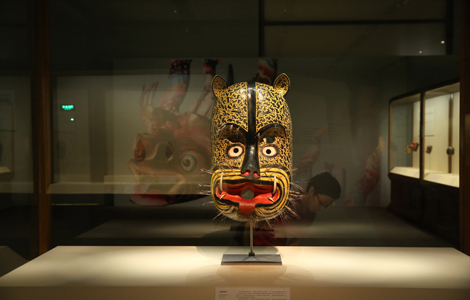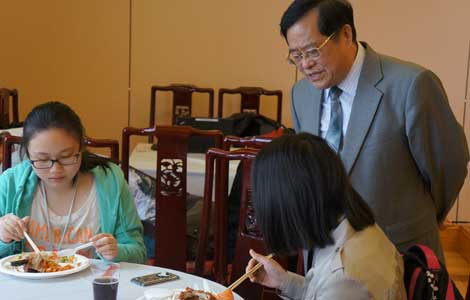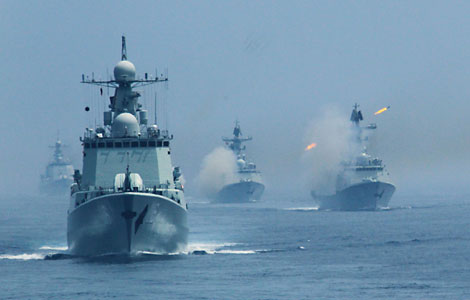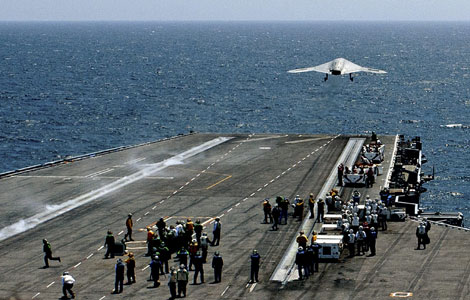In HK's transformation, we win and lose
Updated: 2013-07-12 06:23
By Hong Liang (HK Edition)
|
||||||||
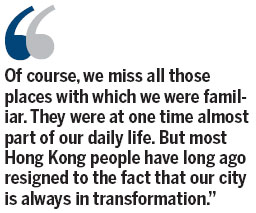
Some years ago, I had lunch at a McDonald's restaurant near London's Trafalgar Square and was shocked to find that a meal there would set you back by 7.5 pounds (HK$88.10) - about four times more than that at any McDonalds outlet in Hong Kong at that time.
That experience sprang back to my mind when I read a recent South China Morning Post report that a McDonald's restaurant was driven out of a busy shopping strip in Hong Kong by discount cosmetics chain Sa Sa - a favorite shopping spot for mainland tourists. With the rent for that 6,000-square-foot premises going up to HK$1.58 million a month from HK$500,000, there's no chance for McDonalds to make money unless it triples its prices, which would seem impossible.
I' not sure whether that McDonald's near Trafalgar Square still exists. But when I was there for lunch, there were only a few customers, mostly tourists.
It's not surprising that even mighty McDonald's has to bow to the reality of Hong Kong's property market. Escalating shop rentals in the city's prime commercial areas have changed our lifestyle to the despair of traditionalists and preservationists.
We have no choice but to take comfort in the fact that this is not happening only in Hong Kong. On one stretch of no more than 200 meters on Huaihai Road in Shanghai, where my office is, there used to be three Starbucks. Now, there's none. They were all replaced by fancy boutiques of high-end European fashion brands. A McDonald's restaurant is still holding out on the strip, but KFC survives only in the basement of an office building.
When I was in Hong Kong last month, a friend lamented that a wonton noodle shop - a favorite of locals in Causeway Bay - pulled down its shutters because it could no longer afford the high rent. Also gone were the numerous eateries and shops that cater mainly to the locals.
There was a pseudo Malaysian restaurant near Times Square that was famous for its sweet curry dishes at reasonable prices. Older generation night owls, including newspaper men and women, would remember the Chiuchow restaurant on a side street in Causeway Bay that opened till 4 am, serving oyster pancakes, braised squids in soy and other delicacies to rowdy crowds every night.
Of course, we miss all those places with which we were familiar. They were at one time almost part of our daily life. But most Hong Kong people have long ago resigned to the fact that our city is always in transformation. It's always like that - we win some and lose some.
Self-respecting local people used to avoid the Wan Chai bar district at all costs. Now, that area has become a bathroom and kitchen furnishing center with hundreds of shops selling chrome taps, and sensor-equipped toilet seats to giant marble tubs. We have reclaimed that area from the drunken sailors of yore.
Lan Kwai Fong was a little-known enclave of embroidery workshops a short walk up the hill from Central. The initiative of a few entrepreneurs, notably Allan Zeman, in the 1980s has transformed that quiet neighborhood into an internationally famous entertainment mecca.
There is nothing permanent in what we built in fast-changing Hong Kong. We never thought much about that wonton noodle place or the Chiuchow nightspot when they were there. Many Hong Kong people, especially the younger generation, didn't even know about the "Wedding Street" in Wan Chai before it was earmarked for redevelopment. And I still can't see the reason for preserving the nondescript building of the former Central Market sitting on one of the most valuable tracts of real estate in the world.
Of course, there is every reason for us to feel outraged by the disfiguration of our harbor which is a natural endowment to all Hong Kong people. We have the right to object to the pollution of the air and demand effective action by the government to address the issue. But there are really many other places we can get McDonald's or wonton soup noodles.
In Shanghai, locals have long ago surrendered the pedestrian-only section of Nanjing Road and the Bund promenade to tourists. They keep to themselves the old tree-lined back streets adorned by understated boutiques and charming cafes.
There are no shortage of such places in the Mid-Levels and the back streets of Tsim Sha Tsui and Wan Chai. Let the tourists occupy Causeway Bay and Mong Kok. We don't mind.
The author is a veteran current affairs commentator.
(HK Edition 07/12/2013 page1)
Most Viewed
Editor's Picks

|

|

|
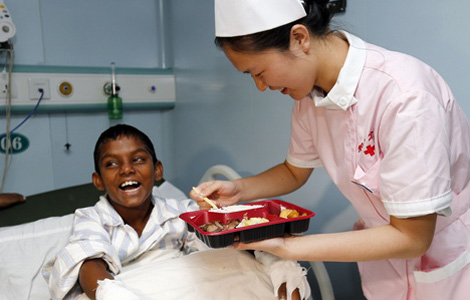
|

|

|
Today's Top News
Constructive mood at talks
Japanese defense report lashed out
Lifesaving top priority, premier says
China's astronauts ready for challenge
Top GSK executives investigated
Rate-reporting rule on horizon
Stocks surge amid speculation on measures
Pathfinder pianist
US Weekly

|

|

